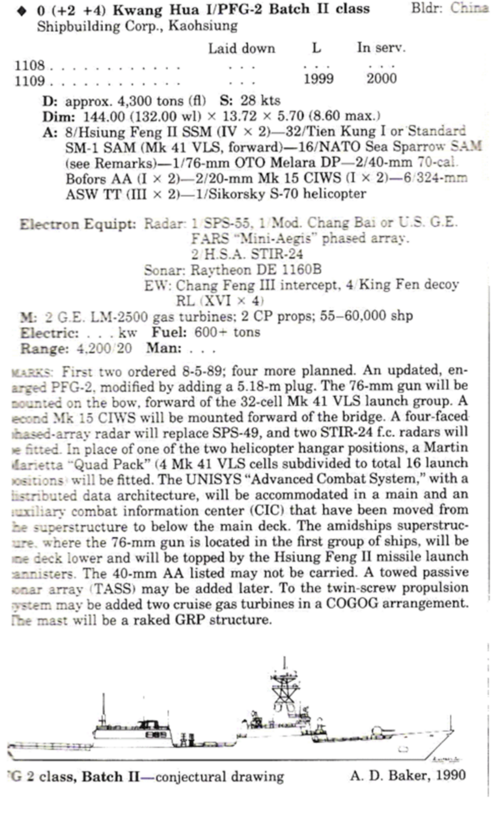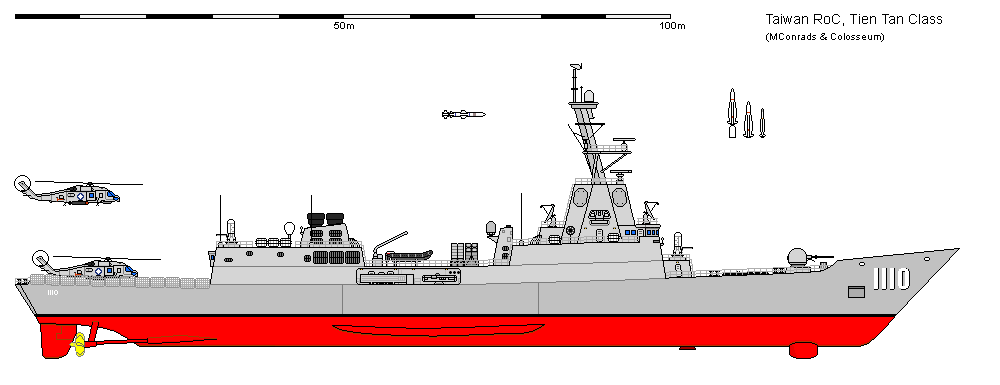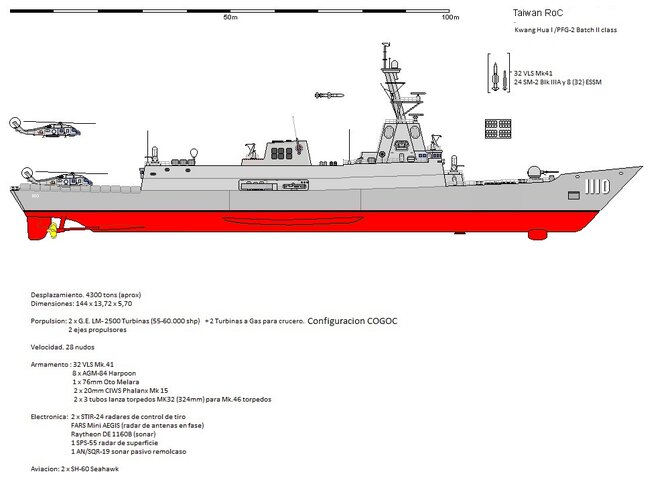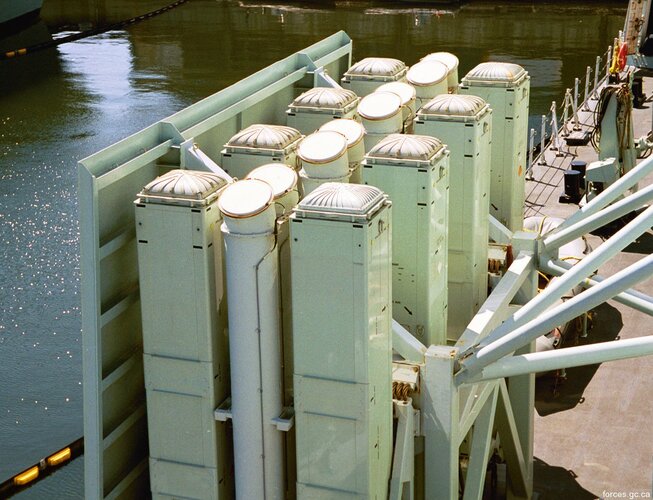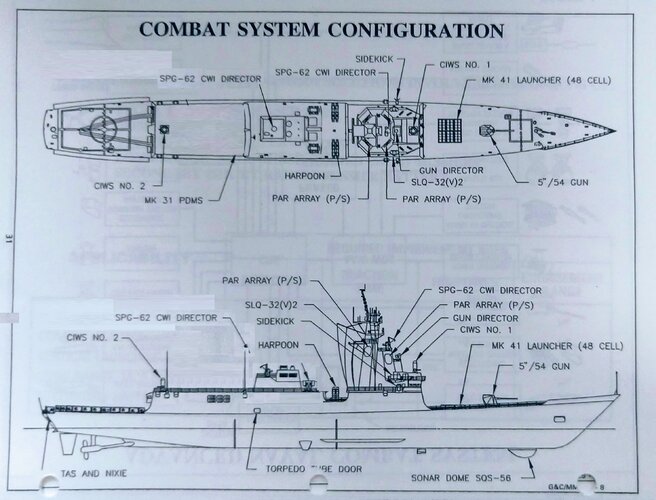Just found in my paper files
a 1995 ASNE Symposium briefing on this ship (link is just to a library reference, sorry), which the authors describe simply as an Advanced Frigate.
It's quite close to the late model design above. At this stage, length overall was 498 feet (151.8 m), with a design full load of 5000 tons and a limiting displacement of 5308 tons. The hull had minimal mods around the bow, stern, shaft lines and flight deck geometry but was stretched midships by 45 feet in length and 5.6 feet in beam (only 2.5 feet at the waterline; the hull flares out noticeably above that).
Machinery is basically unchanged from the FFG-7, meaning two LM2500 and four ship service diesel generators. The main difference is a new chilled water system, which the new radar would need.
Steel structure up to the 01 deck and high strength steel on the upper strength deck (the FFGs used mild steel, which is a lot cheaper) then aluminum for the two deckhouses above that. Protection of some sort (some steel, some kevlar, some just spaced) for key spaces (basically the VLS, the gun magazine, CIC, the electronics spaces, the PAR waveguide, the torpedo launcher room, and the engineering central control room).
Armament includes a 5-inch gun in a shaped housing, not a 3-inch, and two RAM as well as two Phalanx (no Barak -- this version looks like it might have been intended for the US Navy?)
Interestingly, the drawing has 2 RAST tracks and dual hangars with the helo control station cab between them, not a single hangar. Looks
a lot like a baby Flight IIA Burke.
There is a fair bit about the combat system, but nothing terribly new to folks familiar with how AEGIS works. Some surprisingly detailed range and coverage charts, but I suspect they are notional, not real.
Edit: Added a scan of the general combat system arrangements.









